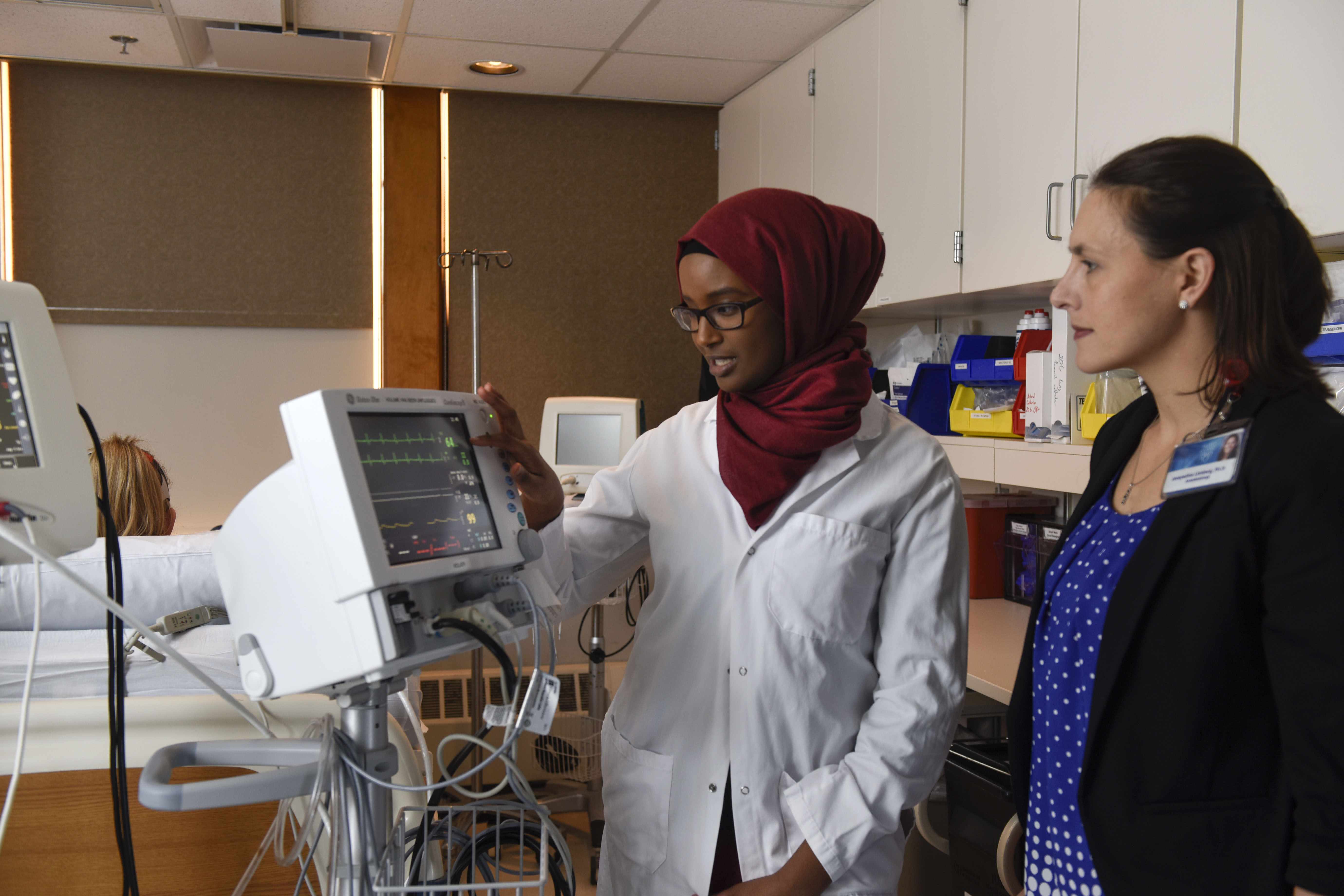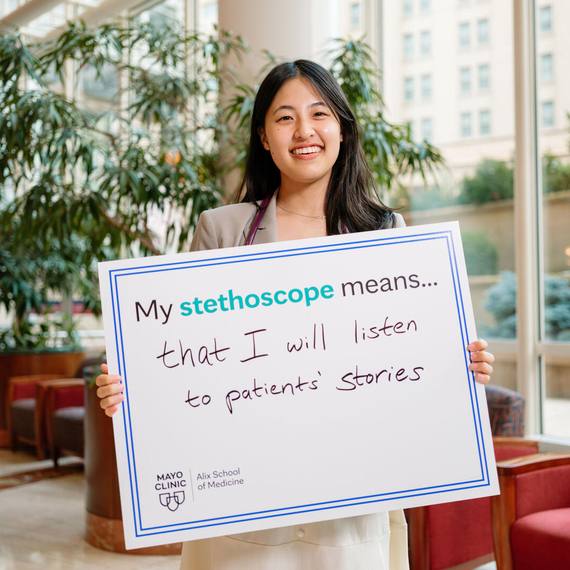-
Mayo Clinic updates names of its college and schools
ROCHESTER, Minn. – The names of Mayo Clinic College of Medicine and Science and its five schools have changed to reflect each area’s focus and function more clearly.
The college and its schools annually educate medical students, physicians, research scientists and allied health professionals. Each school serves a distinct population of medical career based training, from the certificate level to Ph.D.
“The name changes are a start to push forth boldly that we are Mayo Clinic College of Medicine and Science,” says Fredric Meyer, M.D., Juanita Kious Waugh Executive Dean for Education. “We do great medical education, and we felt it was important to also acknowledge the outstanding scientific research and health sciences training that occur within our schools. Our college and schools intertwine with both practice and research, like Mayo’s three shields.”
The new names are:
Mayo Clinic College of Medicine and Science
Mayo Clinic College of Medicine and Science, formerly Mayo Clinic College of Medicine, is the organizational umbrella for Mayo’s five schools ─ each dedicated to a segment of medical education or research training. Four of the schools offer training and clinical experiences with diverse patient populations in multiple practice settings, including Mayo Clinic campuses in three states and many of the 70 Mayo Clinic Health System practices in Iowa, Minnesota and Wisconsin.
While Mayo Clinic has been training medical professionals from throughout the world for more than 150 years, it became an independent degree-granting institution accredited by the Higher Learning Commission, a commission member of the North Central Association of Colleges and Schools, in 1983.
Mayo Clinic School of Medicine
Mayo Clinic School of Medicine was formerly Mayo Medical School. The new name aligns with the current academic industry norm. It is a single, national medical school with one curriculum across Mayo Clinic’s Arizona, Florida and Rochester campuses. It was named a “top 20” medical school by U.S. News & World Report for 2018. Mayo Clinic School of Medicine – Minnesota Campus has an enrollment of more than 200 students. Mayo Clinic School of Medicine – Arizona Campus welcomes its inaugural class of 50 students to its new four-year program in July. It will see an overall enrollment of more than 200 students by 2020. Mayo Clinic School of Medicine – Florida Campus will also offer 3rd and 4th year learning opportunities to medical students who begin on the Minnesota or Arizona campuses through its Florida FOCUS 2+2 program.
The school’s innovative science of health care delivery curriculum, developed in collaboration with Arizona State University (ASU), trains future physicians to meet the challenges of the nation’s evolving and diversifying health care system. The school’s students will be some of the first in the nation to receive a certificate in the science of health care delivery, along with their medical degree. Students also can complete a master’s degree in the science of health care delivery through ASU.
Mayo Clinic School of Graduate Medical Education
Mayo Clinic School of Graduate Medical Education, formerly Mayo School of Graduate Medical Education, is the nation’s largest medical training program. Established in 1915, the school has more than 1,700 residents and fellows in 284 training programs, covering nearly every medical and surgical specialty on all three Mayo campuses. Fifty-five percent of the school’s training programs meet or exceed the national average for women in the given specialty. It is the only integrated school of graduate medical education conducted across broad geographic regions.
Mayo Clinic Graduate School of Biomedical Sciences
Mayo Clinic Graduate School of Biomedical Sciences, formerly Mayo Graduate School, prepares students for careers as competitive, independent research investigators.
Mayo Clinic began preparing candidates for master’s and Ph.D. degrees in biomedical sciences in 1915. The school, now with an enrollment of more than 250, began conferring master’s and Ph.D. degrees independently in 1989.
The Ph.D. Program, which heavily emphasizes research training, leads to a doctorate in biomedical sciences with an emphasis in one of eight areas of specialization. Sixty percent of current students are women. The Regenerative Sciences Training Program, a first-of-its-kind Ph.D. program designed to train the next generation of regenerative specialists, launches in June and is sponsored by Mayo’s Center for Regenerative Medicine. The Medical Scientist Training Program offered in collaboration with Mayo Clinic School of Medicine, is an M.D.-Ph.D. training program. Students can pursue research opportunities at all three Mayo campuses.
Mayo Clinic School of Health Sciences
Mayo Clinic School of Health Sciences, formerly Mayo School of Health Sciences, offers 135 allied health education programs covering 58 health care professions. More than 1,100 students are enrolled across Mayo’s Arizona, Florida and Rochester campuses in programs ranging from certificate level to postdoctoral.
The school has multiple programs listed in the U.S. News & World Report rankings, including the Nurse Anesthesia program ranked as one of the top ten programs in the nation. Some programs are offered in collaboration with other accredited higher education providers. A new master’s degree program for physician assistants begins in fall 2019 in collaboration with multiple universities.
Mayo Clinic School of Continuous Professional Development
Mayo Clinic School of Continuous Professional Development, formerly Mayo School of Continuous Professional Development, teaches physicians, nurses and other allied health professionals the latest, most advanced practices in a broad range of medical specialties plus research, managed care, practice management and leadership. In 2016, more than 60,000 physicians and 41,000 health care professionals participated in more than 200 courses and other continuing educational activities.
Originally named using just “Mayo” between 1915 and the 1980s, the college and schools now incorporate the full Mayo Clinic name to reflect the collaboration and innovation within education, and their strong ties to Mayo Clinic’s clinical practice and research.
“The name changes better reflect the focus and breadth of educational training available at Mayo Clinic,” says Dr. Meyer. “We are simply clarifying the function of each school and Mayo’s capabilities to provide innovative education across the continuum of health care professions.”
###
About Mayo Clinic
Mayo Clinic is a nonprofit organization committed to clinical practice, education and research, providing expert, whole-person care to everyone who needs healing. For more information, visit mayoclinic.org/about-mayo-clinic or newsnetwork.mayoclinic.org.
MEDIA CONTACT
Matthew Brenden, Mayo Clinic Public Affairs, 507-284-5005, newsbureau@mayo.edu








